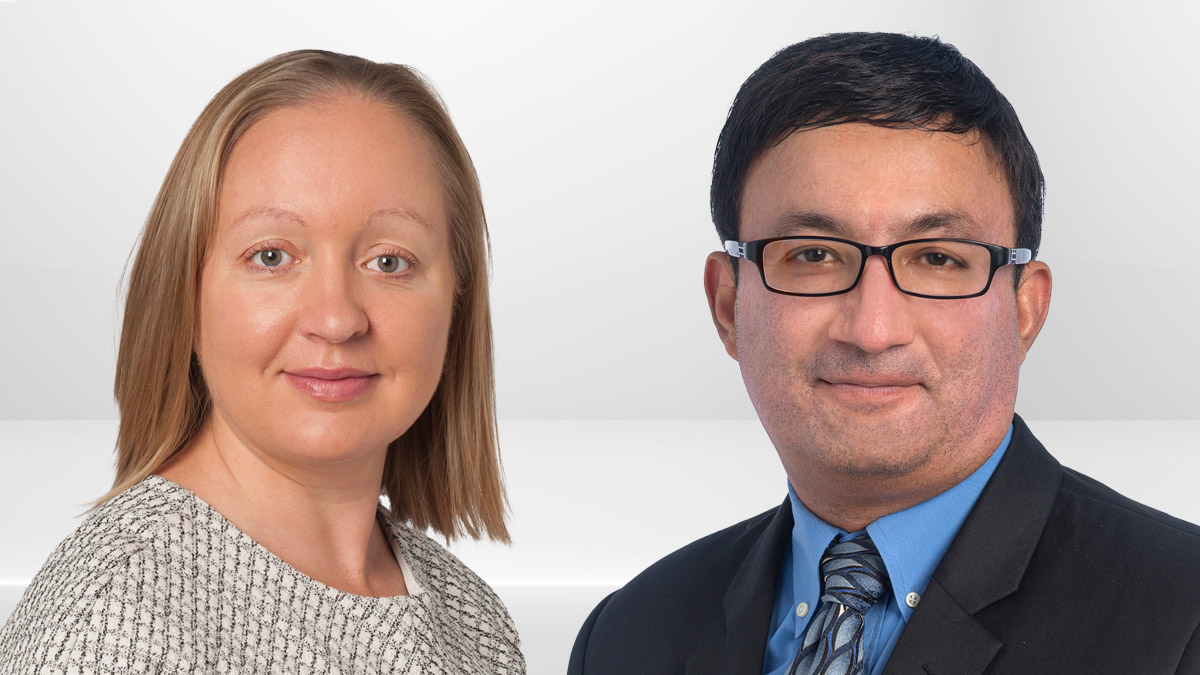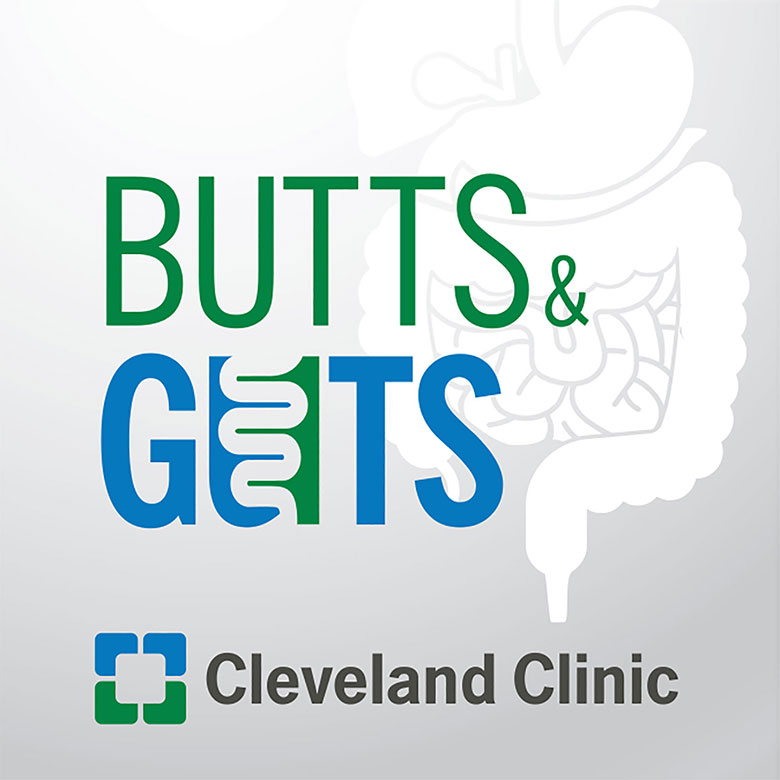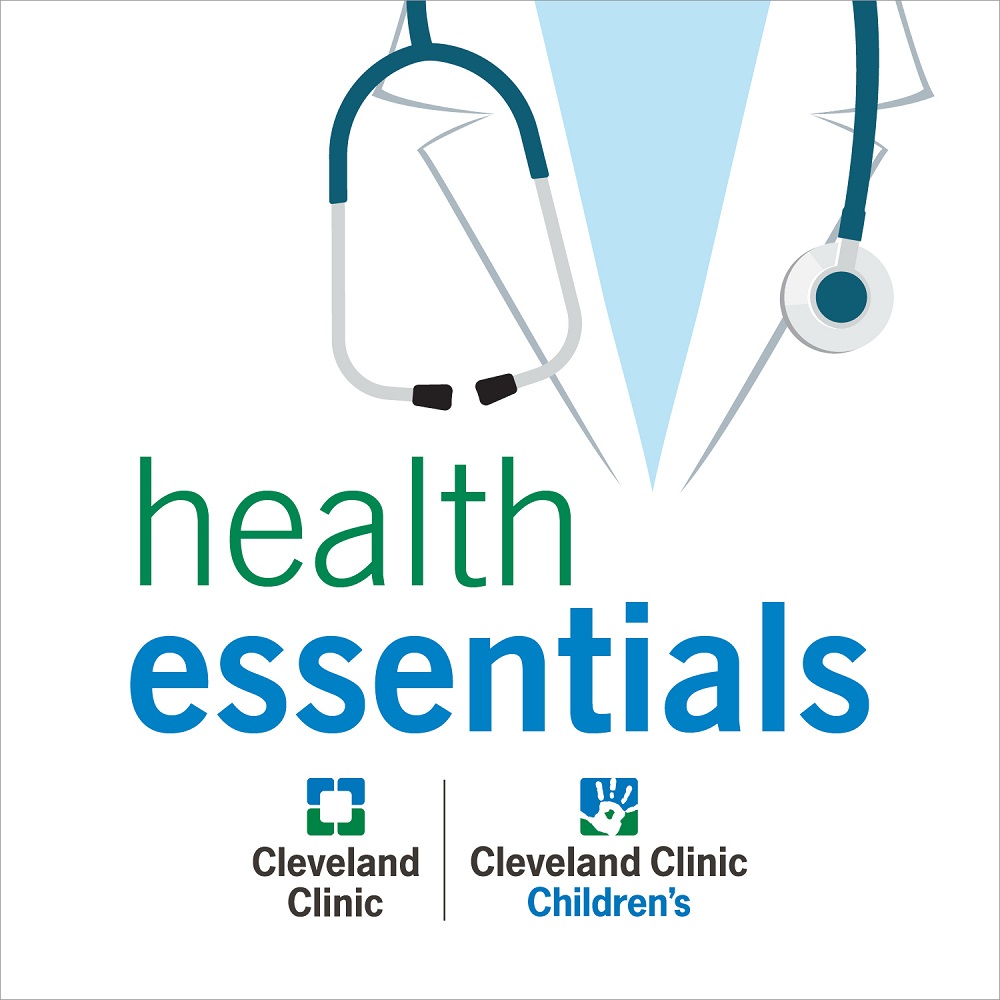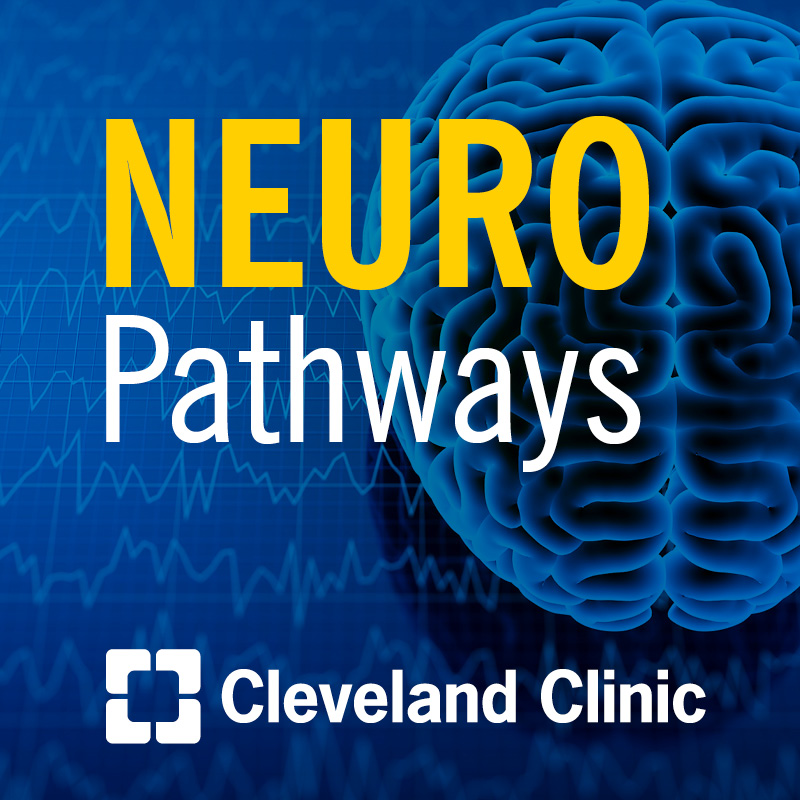Advancing Multiple Myeloma Treatment

The Cancer Advances podcast is joined by hematologists Sandra Mazzoni, DO and Shahzad Raza, MD to discuss the latest advancements in multiple myeloma treatment. Listen as they explore the evolving role of CAR-T cell therapy, bispecific antibodies, and autologous stem cell transplants and how they are changing the multiple myeloma treatment landscape.
Subscribe: Apple Podcasts | Podcast Addict | Buzzsprout | Spotify
Advancing Multiple Myeloma Treatment
Podcast Transcript
Dale Shepard, MD, PhD: Cancer Advances, a Cleveland Clinic podcast for medical professionals exploring the latest innovative research and clinical advances in the field of oncology.
Thank you for joining us for another episode of Cancer Advances. I'm your host Dr. Dale Shepard, a medical oncologist, Director of International Programs for the Cancer Institute and Co-Director of the Sarcoma Program at Cleveland Clinic.
Today I'm happy to be joined again by Dr. Sandra Mazzoni and Dr. Shahzad Raza, Hematologists here at Cleveland Clinic. Dr. Mazzoni was previously on this podcast to discuss monoclonal gammopathy of undetermined significance. And Dr. Raza was here to discuss smoldering multiple myeloma. Both of those episodes are still available for you to listen to.
Today, we're here to discuss advances in the treatment of multiple myeloma. So welcome back guys.
Shahzad Raza, MD: Thank you Dale for having me.
Sandra Mazzoni, DO: Nice to be here.
Dale Shepard, MD, PhD: Maybe as a background, remind us a little bit about what you do here. Let's start with you.
Sandra Mazzoni, DO: So I see a combination of patients, mostly multiple myeloma patients, but I also see some patients with different varieties of classical hematologic problems as well.
Dale Shepard, MD, PhD: Excellent.
Shahzad Raza, MD: I essentially do the same thing that Dr. Mazzoni does. I also perform the CAR-T stem cell transplants and provide the care for newly diagnosed myeloma, relapsed/refractory myeloma and relapsed amyloidosis patients.
Dale Shepard, MD, PhD: Excellent. So we're going to talk about myeloma and some of these newer therapies in what we're doing from a new treatment standpoint, but maybe there's a lot of people, sort of different backgrounds might be listening in. Let's start with what's the traditional way that myeloma has been treated?
Sandra Mazzoni, DO: So traditionally, myeloma, the first thing you determine is is my patient going to be someone who could safely go and get a autologous stem cell transplant. So we call that transplant eligibility. So those who are transplant-eligible, we would tune them up to be able to get, most of the time, a four-drug regimen. And then, after four to six cycles of that, take them for a consolidation, meaning better disease control through a dose of high-dose chemotherapy and that would be rescued by their own stem cells. So that's what the term autologous meant. Those who are not going to be good candidates for a transplant, we would give them a three-drug regimen and continue that until their disease is in excellent control, typically, up to a full year of the three drugs.
Dale Shepard, MD, PhD: Some of these newer things that we're looking at, you had mentioned CAR-T therapies. What are some of the things that have been recently developed that have sort of changed the way we think about how to treat?
Shahzad Raza, MD: Yeah, that's a very good question. So if you talk about the new therapies, I think the science has produced great wonders in this century and it is one of the wonders because we never had things like CAR-T therapy before and it is a new way of attacking the cancer. Basically, you create an army of super soldiers taking the blood, genetically modifying it and target against the myeloma.
And imagine a patient who has been on multiple myeloma therapy on a daily basis, weekly basis, on a monthly basis, and you tell them that you will have a treatment-free remission or treatment-free holiday for several months, maybe years. That's very exciting for these patients and especially the therapy that can give them a long-lasting disease control. So I think it's one of the best therapies we have in the myeloma space.
However, I would say that we have to be very careful with the CAR-T because it takes time, it needs the manufacturing time, it takes two months for the patients to be ready for the CAR-T. So we really have to think in a smart way, how are we going to treat the patient's myeloma? And who is eligible for this novel therapy?
Dale Shepard, MD, PhD: So sort of sticking right now with the CAR-T, a couple of things. In some diseases, we're maybe making a little more progress with what we call off-the-shelf or ready-made or things that are a little bit quicker. What's the landscape in myeloma for those kind of approaches?
Sandra Mazzoni, DO: So right now, a lot of it it's going to be looking at T-cell engagers. So T-cell engagers are going to be a way to use our T-cells that are already in us and force them to attack myeloma cells. So the ones that are FDA approved are called bispecifics, so one target for a T-cell, one target for a myeloma cell. They're physically brought in close proximity to each other in order to activate the T-cell to kill myeloma cells.
Dale Shepard, MD, PhD: And then, when we think about the CAR-T, again, specifically, one thing you mentioned was transplant eligibility, so certain sort of patient characteristics and things, how does transplant eligibility relate to ability to get CAR-T therapy?
Shahzad Raza, MD: That's a moving target. For example, CAR-T can be given to the patients who are not eligible, it means patients a little bit unfit, in late 70s and you want to explore an option for CAR-T therapy, yes, this can be done. It's not necessarily they will need high dose of stem cell transplantation. So that's a very good option for these patients because now these patients can get CAR-T even in 80s. So that is something exciting because we were not doing it before.
Now we have clinical trials. We are actually addressing this question whether patients really need a transplant or we just go after the induction therapy, the CAR-T-cell therapy. So again, we are exploring these options as well. So I think the CAR-T is taking this space. There is a broader acceptability. Previously, it was approved after the four lines of therapy, now more and more people are getting this treatment after one to two lines of therapy. So I think we're making a significant progress and it's find it's way in our management algorithms.
Dale Shepard, MD, PhD: If we go back to, you were talking about the bispecific antibodies, how has that developed in terms of initial targets for that, and how we've sort of made adjustments in that over time?
Sandra Mazzoni, DO: Yeah. So when I talk to patients, I kind of call these targets Star Wars characters because they're all a bunch of letters and numbers. So the very first one that got approval is the same one that CAR-T targets called BCMA or B-cell maturation antigen. So we have two products that are FDA approved there. And then, the novel one that got approval August of 2023 is GPRC5D. So like I said, they sound like-
Dale Shepard, MD, PhD: Sounds like Star Wars, yeah.
Sandra Mazzoni, DO: ... Star Wars characters. Yeah. So what's really cool about all these things is these are off-the-shelf products like you mentioned, they're all subcutaneous, meaning a poke under the skin like an insulin injection. The bigger thing now is knowing and understanding because when you look at the clinical trials, they got FDA approval for all of these, there's a lot of infectious risks, particularly with BCMA target because that BCMA is not only on plasma cells, it's on mature B cells. So you really are making these patients very immunocompromised. And so, we have learned through studying these patients that you can do all these things to prevent infections in the first place. So infection prevention is really important, and knowing when to expect the acute toxicity, so that's usually during the step-up, so the first week of exposure to the drug. And then, the delayed toxicity, so infections with the first target BCMA. And we'll talk more about the second target, GPRC5D, but that has its own host of weird, strange side effects because of the on-target, but off-tumor effects like odd taste changes, that's the major one really.
Dale Shepard, MD, PhD: Yeah. So why don't we go ahead and explore that other target and some of the things we see.
Shahzad Raza, MD: Yeah, so I think when we talk about the toxicities, the good part about the bispecifics is you can titrate, toxicities happen, you can stop the therapy and give it a treatment holiday until the toxicities resolve and then you re-initiate the treatment with some dose adjustment.
But I think we learned a lot. In the last two, three years we have learned how to mitigate these toxicities, how to manage them. And I still think the benefits outweigh the risk because of highly effectiveness of these therapies in the management of relapsed/refractory multiple myeloma. So as Dr. Mazzoni mentioned about infection risk, it's very important. We vaccinate patients, we want to give them immunoglobulins, how to manage those toxicities. And essentially, it's that longterm toxicity, we like to manage them. But when the patient are in the hospital, we give them the step-up dosing.
We look at the condition called CRS, which is called a cytokine release syndrome. Basically, you are stimulating the immune system. And when you stimulate the immune systems, patients can have fevers, tachycardia, hypotension. These effects happen, so that's why we keep them in the hospital and manage those effects called the CRS. Usually, these are very manageable. And usually, we are very successful in keeping these patients in the hospital and manage these side effects, they're mostly grade 1 and grade 2.
However, I would like to switch the gear here about the CAR-T effects because those are all so parallel. So when we talk to the patients, either you want to go to CAR-T or bispecific, we discussed about the toxicities. Now, CAR-T is a one-time deal, but it does have a toxicity like more CRS, more neurological toxicities or ICANS type of symptoms. So we really have to discuss the patients about these toxicities. And based on the risks versus benefits, patient decide about which path they would like to take.
But in a big picture, I do see there is effectiveness of the therapy, highly effective, and they're very tolerable agent, especially if somebody is taking the bispecifics in the longterm, it's very tolerable. If we know what side effects it can cause, we can manage them. Same thing for a CAR-T, the only thing is you cannot titrate, you just go through one time and then you manage them and keep an eye and then possibly give patients a good quality of life for longterm.
Dale Shepard, MD, PhD: So now that we have more options, still have transplant, have CAR-T, have bispecifics, if you see a patient in clinic, what are some of, either the disease characteristics or the patient characteristics that lead you down One of those three paths?
Sandra Mazzoni, DO: Are we talking about a newly diagnosed patient or relapsed/refractory patient?
Dale Shepard, MD, PhD: Yes. Why don't we cover both?
Sandra Mazzoni, DO: Okay. So for a newly diagnosed patient, we actually have a study here that is enrolling new patients that are transplant-eligible for a 50/50 randomization between transplant after the induction chemotherapy versus CAR-T. So we're all placing bets on which one is going to be the winner here. Because there's going to be a maintenance phase to both of these, my money's on CAR-T. I really do think that, two, three years from now, we're going to be seeing, at large academic centers, a replacement of autologous stem cell transplant by CAR-T.
Dale Shepard, MD, PhD: I'm seeing another episode in a couple of years where we talk about the results.
Sandra Mazzoni, DO: Yes. And then, in the relapsed/refractory, that's much more complicated. So in that, I really have the patient kind of guide me on what do they want? Do they really want to have that holiday off of treatment? That really pushes it more towards CAR-T. So you have to have a more fit patient, someone who is... Both of these require good caregiving outside of us at the hospital, but the window and the time and length where you need a 24/7 caregiver, CAR-T is much longer than what's needed with the initial step-up dosing with a bispecific. So that plays into... Actually, more so than anything is what does the patient have as far as support system? That's our number one reason why we go towards a bispecific versus a CAR-T, in all honesty.
Dale Shepard, MD, PhD: And so, that's sort of thinking about caregiver directly helping with management of the patient. We're at a large academic center, as these newer treatments have been coming along, what's the role of community oncology support and where do they come in in terms of referrals, follow up? How do we work with our partners?
Shahzad Raza, MD: That's very important question because I think that's an education gap. And sometimes, there are patient factors as well. So I put this into two perspective, one is from the patient side. Some of the patients really like to get treated locally and they don't want to travel to the large academic centers despite highly effective therapy and it'll change the corners of the disease altogether, they want to stick to their local place. And I have interviewed many patients about their opinions and they mostly feel more comfortable in the region.
So I think there is an unmet need that these highly effective therapies should be available in the region because that can change the patient's quality of life. That's, I would say, the number one factor I see. I think our regional doctors are very educated. Our own doctors in the community, they participate in many education sessions and most of them are aware that the patients who have a relapsed and refractory disease, it is better to send these patients earlier to the large academic centers so that we can educate them, educate the patients, and then, maybe plan it better what needs to be done if the disease progresses.
Unfortunately, what happens, we get the patients, but they are actively relapsing it. Now you have to do right away something tomorrow. So we have a dedicated inpatient hospital service. So sometimes we admit the patients, treat them in the hospital and get them better, but it'll change the planning. So my advice to our group members and our team members is that it's better to refer these patients earlier in the disease course when these patients have a good disease control with their first-line treatment so that we can plan, okay, if something comes up, what do you do next? Because we have open, exciting clinical trials here, like a bispecific therapy, we are doing after first-line or second-line therapy, which is not available as a standard of care.
So I think education, more awareness about what clinical trials we have and sometimes, the mutual plan, like with a local doctor and with us, that would be very helpful. And I also feel, and I think Dr. Mazzoni is already working on it, that going to the region and outside our network, I think this is beyond our network, like patients who've been treated in remote areas about education, about CAR-T, avoid the misconceptions about CAR-T and the bispecifics, patient testimonies, how the patients have done on these therapies. Certainly, these things are really important and it will change the whole paradigm of how we treat the multiple myeloma.
Dale Shepard, MD, PhD: And that whole timeliness kind of plays into what you'd mentioned about time for CAR-T might get forced into a bispecific based on time.
Sandra Mazzoni, DO: Correct. So there's a lot that goes into all of this. And I think the biggest thing that I try to do is I'm trying to really advocate for myeloma as a community to have better understanding of how to manage the toxicities. And how do you feel comfortable getting on board with taking ownership of delivering bispecifics everywhere? It's crazy that there's only somewhere around the order of 20, maybe 30% of our myeloma patients that live within two hours of a center that is qualified to be able to give bispecifics, it's even lower for CAR-T access. But CAR-T is a one-and-done, bispecifics are an ongoing therapy. So I really think that our efforts is to educate and get this readily available medication out in the community.
Dale Shepard, MD, PhD: And really, that collaboration with community partners, it sounds like there's two parts. One is getting people here in the first place early enough to talk about all the options, but then the other is can they be more engaged with managing long term side effects and symptoms and things like that?
Sandra Mazzoni, DO: Correct.
Dale Shepard, MD, PhD: So we talked about bispecific antibodies. So bispecifics are good, how about trispecifics?
Sandra Mazzoni, DO: Okay. So-
Dale Shepard, MD, PhD: I mean, it makes sense, right?
Sandra Mazzoni, DO: Yeah. Yeah. So the whole point of a trispecific... So bispecific, no one really fully understands why the efficacy is lost with a bispecific. They don't know if it's a mutation that happens within the target or if it's just burning out of the T-cell. So now, they're using trispecifics. So the trispecifics, there's different constructs. All of these are in clinical trial or in process of being developed. So either two targets for the immune cell itself, so T-cell or a natural killer cell and one target for the myeloma, or there's actually some CAR-T constructs coming out that are called dual-targeting and those are really cool. So they're going after both of our Star Wars characters, the GPRC5D and BCMA. I think that's going to be the new wave is coming up with ways to increase the durability without increasing toxicity.
Dale Shepard, MD, PhD: Makes sense. Are there any other particular, exciting breakthrough ways to treat that you sort of have your eye on?
Shahzad Raza, MD: Yeah, I would say precision oncology is something that I have particular interest, like every cancer is personalized and you really need to know the precision medicine and how you particularly treat. There are anecdotal case reports about the success of precision therapy. I think integrating the artificial intelligence into the gene mapping and the cancer adverse events, so if you combine all together, people can...
Actually, we are also working on that, creating an algorithm, how we can personalize the treatments because sometimes, the three drugs are enough for some patients, but sometimes, the four drugs are needed, 30 years ago, only two drugs were there. So we are progressing in that. Now, we are talking about not even doing these four, maybe doing upfront CAR-T in some patients or doing some bispecific upfront.
Who's going to exactly benefit more compared to other? That's an unmet need. That's why we have clinical trials. And we are also gathering a lot of data about our patients, how they have treated, what exactly happened to them, what works better for them. And I think, in the next two to three years, we have a lot more answers about the personalized medicine in this area.
Dale Shepard, MD, PhD: When we think about a lot of patients out there of myeloma, sometimes it's more difficult for some to get to a specialty center than others. Are there particular disease characteristics, particular types of patients that it's more urgent than not to get to a center like this?
Sandra Mazzoni, DO: Patients who have high-risk disease, both clinically and cytogenetically, those are the ones that really need to get here. Patients that are not responding to the standard induction therapy really need to get a referral.
Shahzad Raza, MD: Yeah. And I will add the timing. Sometimes, what I have seen, the difference here, that the patient is diagnosed, getting them into the treatment, it takes three weeks and four weeks or even more. And these patients get very complicated during this time because they need treatment right away. We are very fortunate at Cleveland Clinic because we have a service where patients comes in from far and we know this patient needs to be treated. We immediately admit these patients and get them treated in the hospital. It just changed the whole picture because you started the treatment and they get better and then they live longer. So I think timing is the key. And really, my message to our other colleagues is once you know this is the multiple myeloma, don't wait. These patients need treatment right away. It doesn't matter how you start, but you have to get the disease under control. I think it's an unmet need that a lot of us are lacking at this point.
Sandra Mazzoni, DO: I'll also echo what you said earlier about getting patients, as you start to see their disease relapse, refer them early.
Dale Shepard, MD, PhD: Excellent. Well, it looks like lots of interesting things coming along from a treatment standpoint. Sounds like we've already got a plug in for some results on an upcoming podcast, so appreciate you guys being here and your insights today.
Sandra Mazzoni, DO: Thank you.
Shahzad Raza, MD: Thank you.
Dale Shepard, MD, PhD: To make a direct online referral to our Cancer Institute, complete our online cancer patient referral form by visiting clevelandclinic.org/cancerpatientreferrals. You will receive confirmation once the appointment is scheduled.
This concludes this episode of Cancer Advances. For more podcast episodes, visit our website, clevelandclinic.org/canceradvancespodcast. Subscribe on Apple Podcasts, Spotify, or wherever you listen to podcasts.
Thank you for listening. Please join us again soon.


